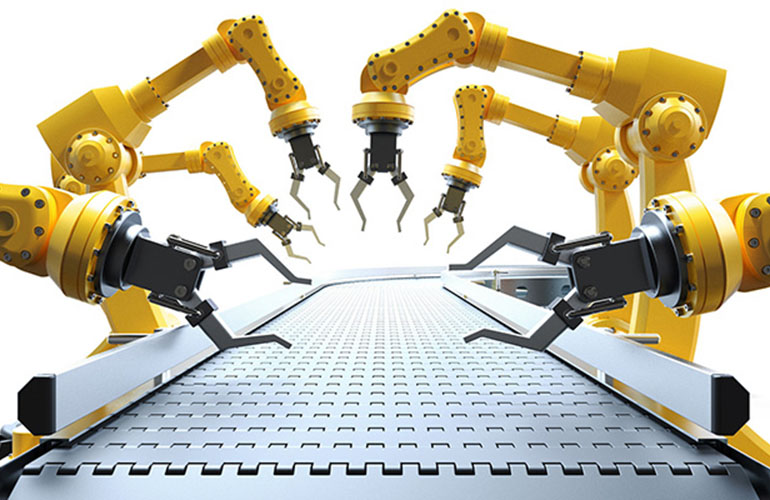|
Listen to this article  |

The Association for Advancing Automation (A3) tracks the number of robots sold to North American companies each quarter. | Source: A3
37% fewer robots were purchased in April through June of 2023 than during the same period of 2022, according to the Association for Advancing Automation’s (A3) latest report. This slowdown in the robotics industry is due to a low US economy and high interest rates, according to A3.
This is the second quarter in a row the robotics industry has seen a decline in sales in North America, following a record-breaking 2021 and 2022. From April to July of 2023, North American companies ordered 7,697 robots valued at $457 million, a 37% decline in robot orders and 20% drop in value from the same period in 2022.
For the entire year so far, the North American robotics market has ordered 16,865 robots, down 29% compared to the first half of last year.
“Over the last five years, we’ve seen a steady acceleration of robot orders as all industries have struggled with a labor shortage and more non-automotive companies recognize the tremendous value automation provides,” Alex Shikany, vice president of membership and business intelligence at A3, said. ”After this post-COVID surge, however, we’re seeing a drawback in purchases, exacerbated by the slow economy and high interest rates. While many companies continue to automate, others just don’t have the capital to invest right now, despite their struggle to find workers willing to do many of the dull, dirty and dangerous jobs that remain unfilled.”
While sales have slowed down in 2023, both 2021 and 2022 were record years for North American robot sales. North American companies ordered 44,196 robots in 2022, an 11% increase from 2021, and much of those sales occurred in the first nine months of the year.
At the end of 2021, and into 2022, the industry saw three record-high quarters in a row. Sales began to slow in Q3, though they were still higher than in the same quarter in 2021.
In Q2 of this year, non-automotive customers ordered more robots than automotive customers, with 52% of units going to non-automotive industries and 48% going to automotive OEMs and component suppliers. Both categories are down compared to the second quarter of last year.
The strongest demand for robots in Q2 came from the semiconductor and electronics industries followed by life sciences/pharma and biomedical, plastics and rubber, and metals. Automotive components, food and consumer goods, and automotive OEMs showed the biggest drops.
It should be noted A3 only collects sales data on traditional industrial robots. It doesn’t collect data about autonomous mobile robots or collaborative robotic arms. If A3 recorded sales for these types of robots, too, sales numbers would be higher.
Credit: Source link


Comments are closed.